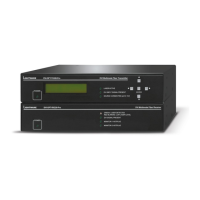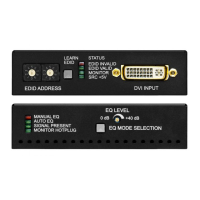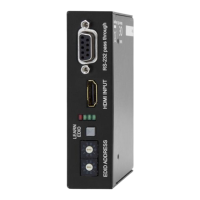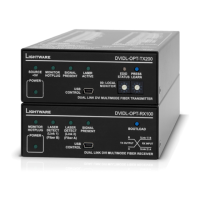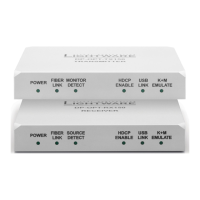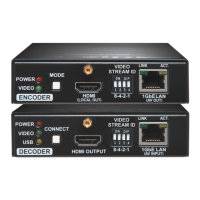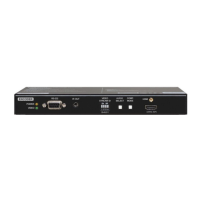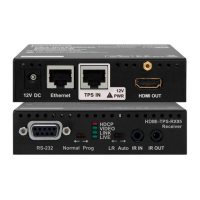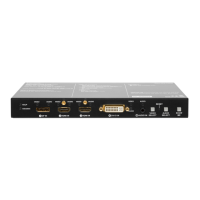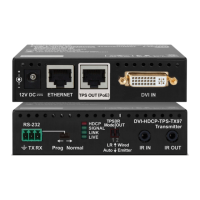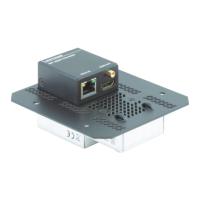9. Technologies DVI-OPT-220-Pro series – User's Manual 33
9
Technologies
The following sections contain descriptions and useful technical information
how the devices work in the background. The content is based on experiences
and cases we met in the practice. These sections help to understand features
and technical standards like the followings:
Ý
Ý
Ý
EDID Management
Understanding the EDID
display devices (monitors, TV sets, projectors). It contains information
about the capabilities of the display, such as supported resolutions,
refresh rates (these are called Detailed Timings), the type and
manufacturer of the display device, etc.
After connecting a source to a display (DVI, HDMI, DP), the source
reads out the EDID to determine the resolution and refresh rate of the
image to be transmitted.
Who are
you?
I am a monitor.
Here is my EDID.
Now I know what
I can send.
EDID Communication
Most DVI computer displays have 128-byte long EDID structure.
However, Digital Televisions and HDMI capable displays may have
(Consumer Electronics Association). This extension contains
information about additional Detailed Timings, audio capabilities,
speaker allocation and HDMI capabilities. It is important to know that
all HDMI capable devices must have CEA extension, but not all devices
with CEA extension are HDMI capable.
Common Problems Related to EDID
and an SXGA (1280x1024) projector. I would like to see
Solution: If you want to see the image on both displays, you need
to select the resolution of the smaller display (in this
case SXGA), otherwise the smaller display may not show
the higher resolution image.
the Lightware device to have a different resolution but
Solution: Some graphics cards and video sources read out the
EDID only after power-up and later they do not sense that
EDID has been changed. You need to restart your source
to make it read out the EDID again.
Advanced EDID Management
Each DVI sink (e.g. monitors, projectors, plasma displays, etc...) must
support the EDID data structure. Source BIOS and operating systems
are likely to query the sink using DDC2B protocol to determine what
pixel formats and interface are supported. DVI standard uses EDID
data structure to identify the monitor type and capabilities. Most DVI
sources (VGA cards, set top boxes, etc.) will output DVI signal after
readout failure or missing EDID, the source will not output DVI video
signal.
Lightware devices provide the Advanced EDID Management function
that helps system integration. The built-in EDID Router can store and
emulate factory pre-programmed- and User programmable EDIDs. The
EDID of the attached monitors or projectors for each output are stored
in a non-volatile memory. This way the EDID of a monitor is available
when the monitor is unplugged or switched off.
Any EDID can be emulated on any input. An emulated EDID can be
For example, the Lightware device can be set up to emulate a sink
device, which is connected to one of the outputs. In this case, the EDID
automatically changes, if the monitor is replaced with another display
device (as long as it has a valid EDID).
EDID is independently programmable for all inputs without affecting
each other. All inputs have their own EDID circuit.
INFO: The user is not required to disconnect the video cable to
EDID can be changed even if a source is connected to the input and
powered ON.
HOTPLUG signal for 2 seconds. Some sources do not sense this
signal. In such cases, the source device must be restarted or
powered OFF and ON again.
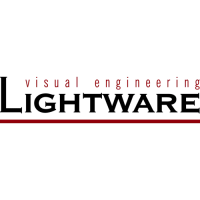
